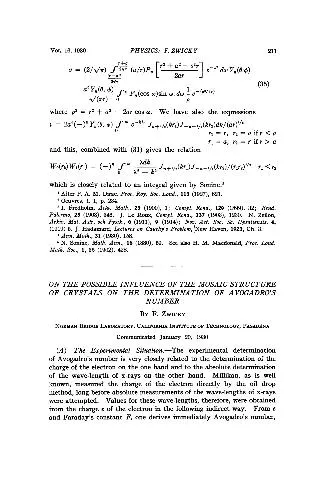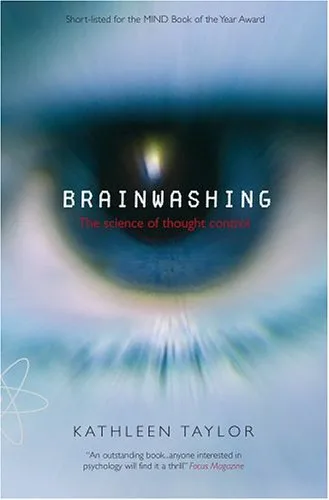On the Possible Influence of the Mosaic Structure of Crystals on the Determination of Avogadros Number
5.0
Reviews from our users

You Can Ask your questions from this book's AI after Login
Each download or ask from book AI costs 2 points. To earn more free points, please visit the Points Guide Page and complete some valuable actions.Related Refrences:
Welcome to the comprehensive introduction to "On the Possible Influence of the Mosaic Structure of Crystals on the Determination of Avogadro's Number," a pivotal work that delves into the intersection of crystallography and chemistry. This book explores the intricate role of the mosaic structure of crystals, potentially reshaping our understanding of Avogadro's number.
Detailed Summary of the Book
The book meticulously addresses the hypothesis that the inherent mosaic structure of crystals could significantly affect the measurements used to determine Avogadro's number. Avogadro's number is a fundamental constant in chemistry that defines the quantity of constituent particles (usually atoms or molecules) contained in one mole of a substance. Understanding its precise value is crucial for accurate scientific calculations and foundational chemical principles.
The author delves into the historical context of how Avogadro's number has been determined over time, showcasing how advances in crystallography have influenced these measurements. The discussion on mosaic structures—non-uniformities within crystals that impact their overall diffraction patterns and measurements—provides a fresh lens through which to evaluate traditional methodologies.
By examining past experiments that employed X-ray crystallography and other techniques, this book proposes alternative approaches that could account for the mosaicity of crystals. The implications of this perspective could refine measurement techniques and enhance the precision of Avogadro's number, thus bolstering the accuracy of various scientific applications.
Key Takeaways
- The mosaic structure of crystals suggests potential variability in Avogadro's number.
- Historical methods of determining Avogadro's number may require recalibration to account for mosaicity.
- Advancements in measurement tools and techniques are crucial for elevating precision in fundamental constants.
- The intersection of crystallography and chemistry harbors potential for groundbreaking discoveries.
Famous Quotes from the Book
"The complexity of crystalline structures mirrors the intricate dance of atoms, urging us to look deeper, beyond the apparent uniformity."
"Re-examining the constants of science not only refines our understanding but paves the way for new pathways of discovery."
Why This Book Matters
This book stands at the forefront of scientific inquiry, addressing fundamental challenges in the measurement of a key constant in chemistry. The nuanced exploration of mosaic structures in crystals not only challenges existing paradigms but also accelerates the momentum for future research. By providing a well-rounded discussion on how these structures might influence Avogadro's number, this work invites scientists to refine methods and reconsider assumptions that have been taken for granted within the scientific community.
Moreover, its implications extend beyond chemistry and crystallography, touching upon fields such as materials science and physics. The multidisciplinary lens through which the book approaches its subject matter enriches our understanding of the microscopic world and emphasizes the dynamic nature of scientific exploration.
Ultimately, "On the Possible Influence of the Mosaic Structure of Crystals on the Determination of Avogadro's Number" is not just a book—it is a call to action for scientists to embrace complexity and pursue precision, driving science into a future where constants are not just accepted, but thoroughly scrutinized and understood.
Free Direct Download
You Can Download this book after Login
Accessing books through legal platforms and public libraries not only supports the rights of authors and publishers but also contributes to the sustainability of reading culture. Before downloading, please take a moment to consider these options.
Find this book on other platforms:
WorldCat helps you find books in libraries worldwide.
See ratings, reviews, and discussions on Goodreads.
Find and buy rare or used books on AbeBooks.













